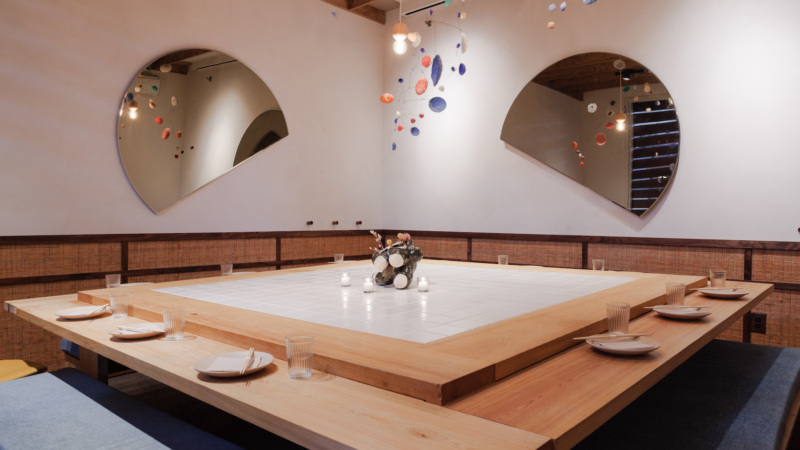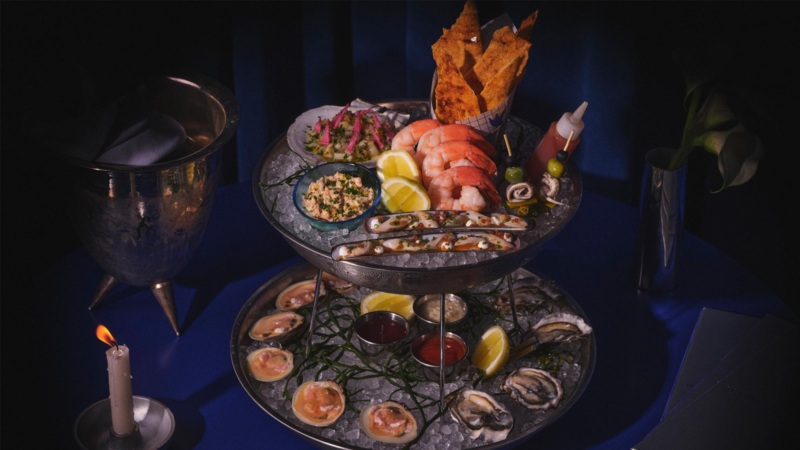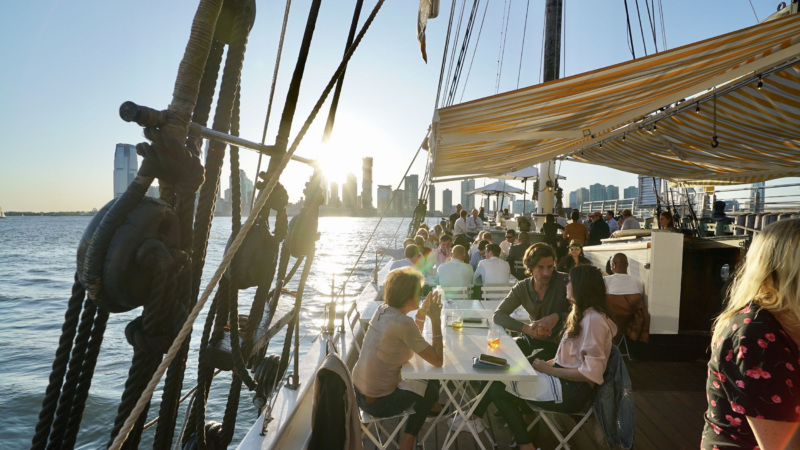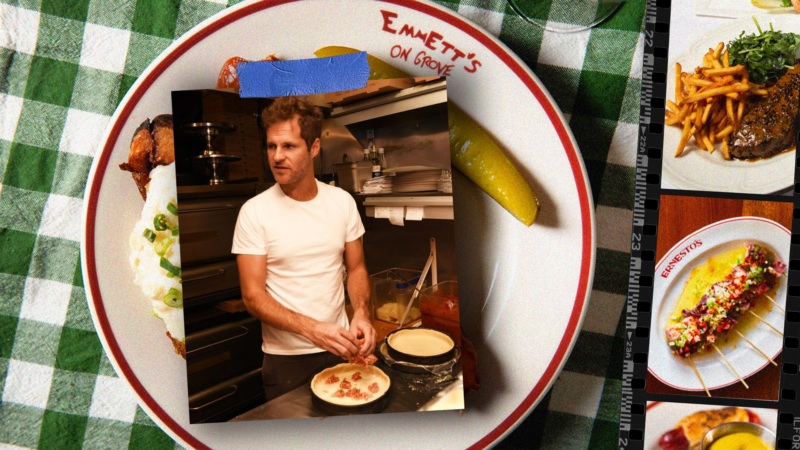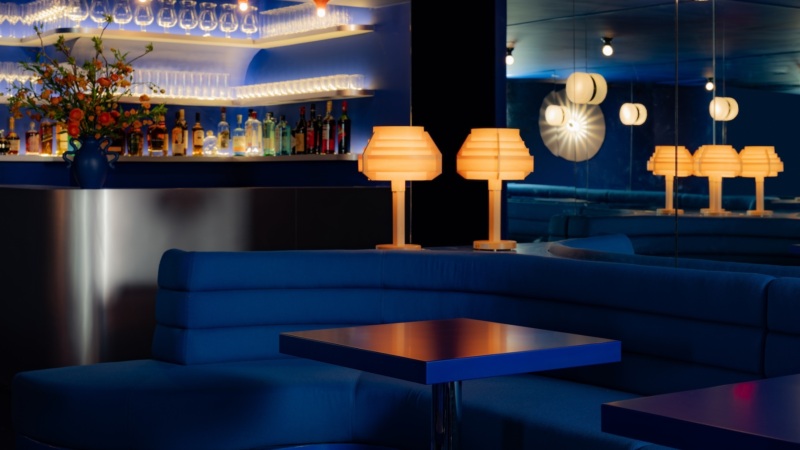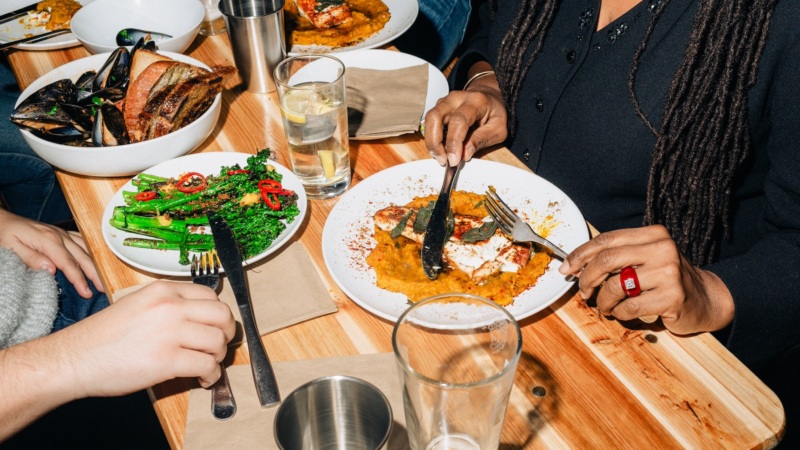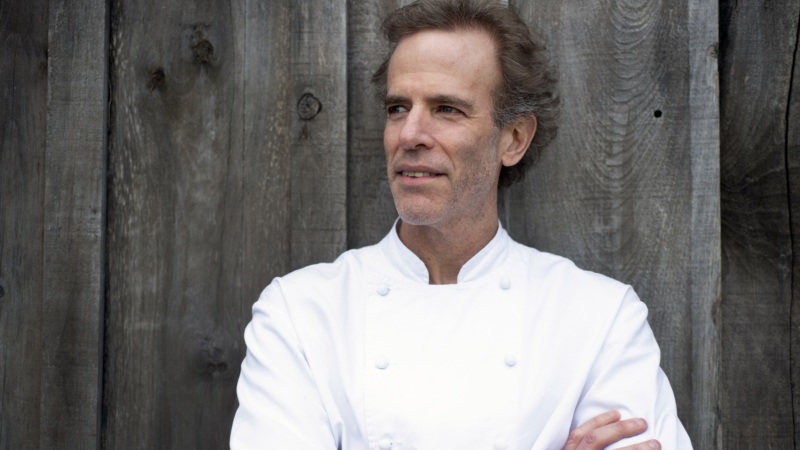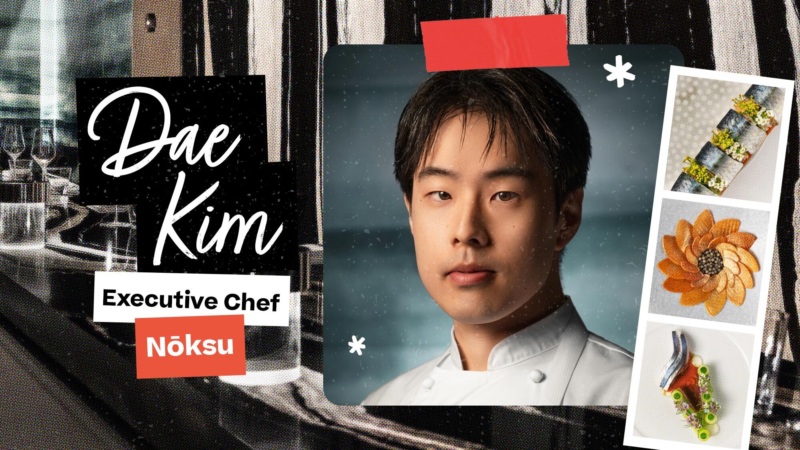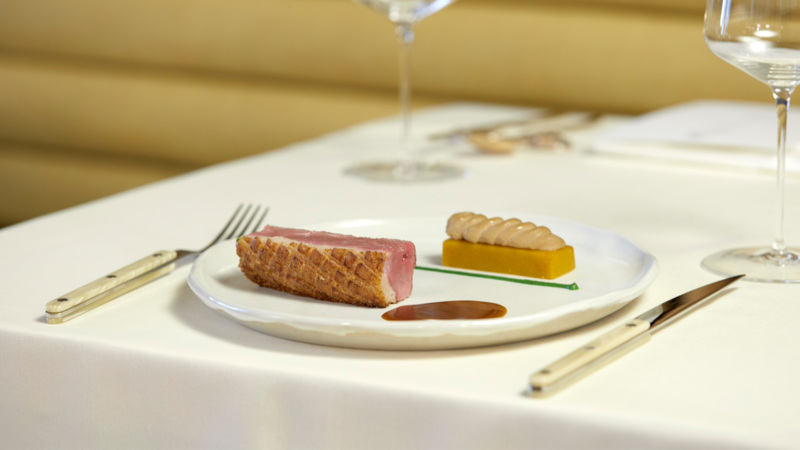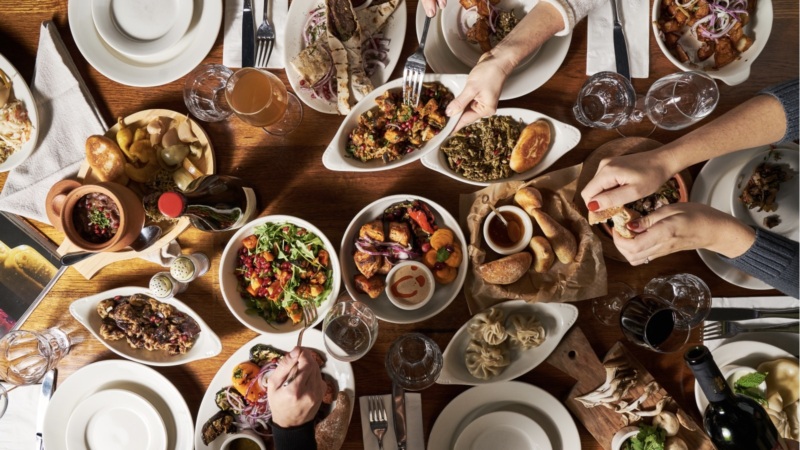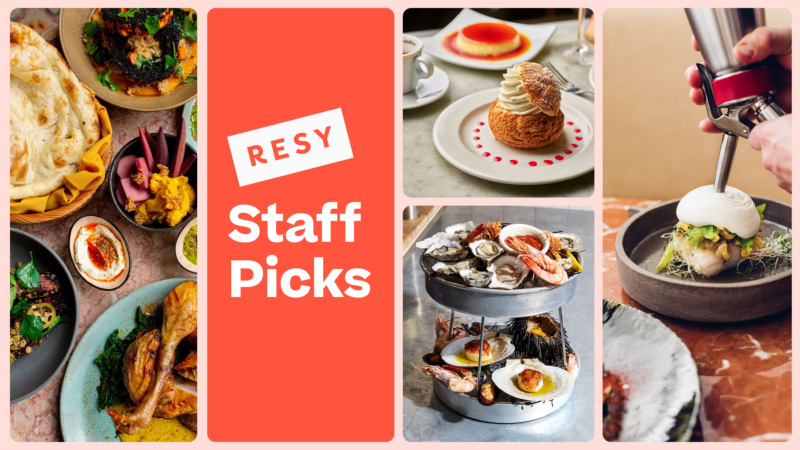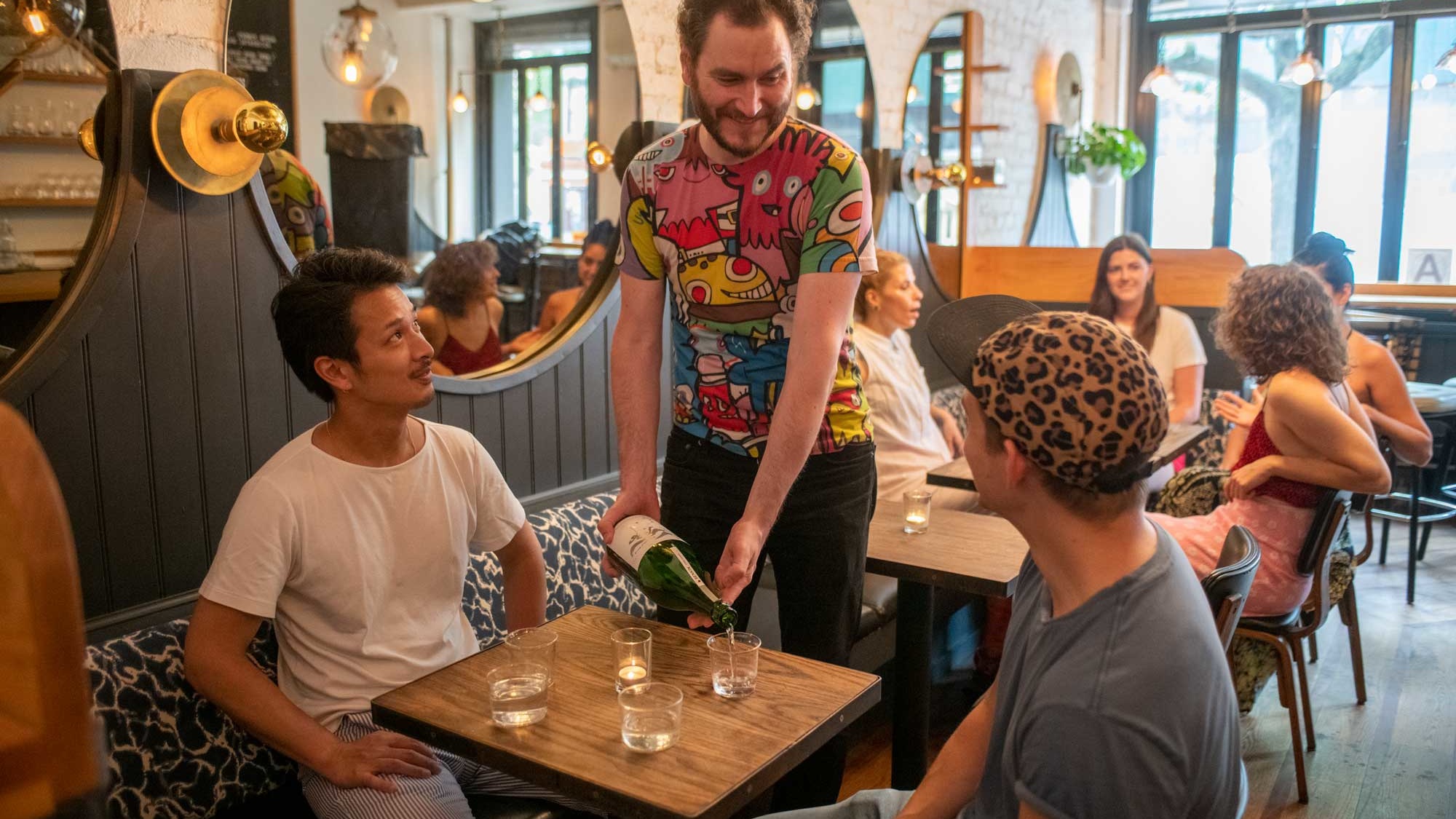
Accidental Bar’s Austin Power Wants Everyone to Love Sake
Forty days may be enough time for a biblical flood, but it is not much time to open a restaurant, certainly not in New York. If you’re foolhardy enough to attempt such a thing, you might as well name it Accidental Bar. Which is precisely what owner Austin Power did, having gotten the keys barely more than five weeks ago.
The city’s most recent entry to a long and proud tradition of sake bars, especially in the East Village, was both totally unplanned — and a long time coming. The owners of the Alphabet City bar Lois, Nora O’Malley and Phoebe Connell were getting ready to shut down, and Power was a regular; he even had his first date with his now-husband, Atsushi Ida, there. They overheard his musings about taking over the space, perhaps too well.
“The first text message, ‘Maybe I can do it,’ happened three months ago,” he says. “Now we’re open.”
The accidental name seems almost too apropos for Power’s plans — to replicate the neighborhood watering hole that Lois was (regulars may notice the decor is basically identical) but also to be a vegan-leaning sake bar with visions of enlightenment about this most understood of beverages. Yet this is very much a reflection of how Power, who arrived in New York 17 years ago from his hometown of Clinton, S.C., to attend Parsons School of Design, to study as a painter, has quietly become an important figure in New York’s clubby sake circles.
After graduation, as Power watched his career options get scuttled by the economic crisis, he also met Satsko Watanabe, owner of Sake Bar Satsko, one of the city’s pioneers in serving sake. He quickly became a regular there, and when one of Watanabe’s staff didn’t show up, she nominated him to step in. So began a decade-long love affair with the drink, one that would lead him to Ariel Arce’s Tokyo Record Bar, and Niche Niche, where his presence was memorable — his enthusiasm; his sake pairings; his self-designed, decidedly phallic t-shirts.
But hey, sake is in need of evangelists of all shapes and sizes, given its steep decline in popularity in native Japan. So why shouldn’t someone like Austin Power, with his trademark #hashtagwhoops, come to the rescue? (What, you were expecting #shagadelic?)
Resy talked with Power about his cheerful crusade.
I take it your view is that New Yorkers are not drinking enough sake.
Ninety percent of the people I interact with are sake newbies, or they’ve had an off experience. So the top two things I hear are, “I don’t really like sake.” Which translates to me as, “I was in a mall once, they gave it to me for free, and I hated it.” Or, “I don’t really know that much about sake.” Which means, “I am on a date, I like this beverage, but I don’t feel confident enough to choose something, to make this person go out with me again.”
I have a couple of mantras. In 2019 it was, “I want more people to drink more sake, more irresponsibly.” 2020 was a rough year, so that was, “Just try it. If you don’t like it, at least you learned something and you’re still drunk.” And then 2021 is, “Come for the party, leave a little smarter.”
So it’s tricking people into learning through being fun.
But the city has a long history of places have tried to get people interested in sake, going back to Decibel. It’s been almost 30 years of attempts. Is there some new approach that will change things?
My vibe has always been you can make a great recommendation, people can come, they can have a beautiful pairing. But the way people drink sake in restaurants can feel very … special. It often doesn’t give people information on how to drink it in everyday life.
So it’s who-what-when-where-why of this sake. Like, what could you drink in the park with your friends. What can you take to the beach, that’s as delicious cold as it is warm, so that you could just pop it into the sand and not worry about it? When you allow people to think about how they can do this daily, and not have to be so so precious about it, it opens up a lot of opportunity.
Also, in the last year, we’ve seen the explosion of White Claw. And I’m like, sake does all of the same things, but it’s really, really great. It’s low acidity, it’s not high in carbs, it’s gluten free, it’s vegan, it’s kosher.
So I tell people, you know, this is sake that’s great for your cousin’s dry wedding that you don’t want to be at. Or, this is the sake that’s a beautiful one-cup you can hide in your jacket if we ever get to go to movie theaters again. Or this is the sake to drink with your mother-in-law, who you want to impress. Or this is the one to get down with your friends.
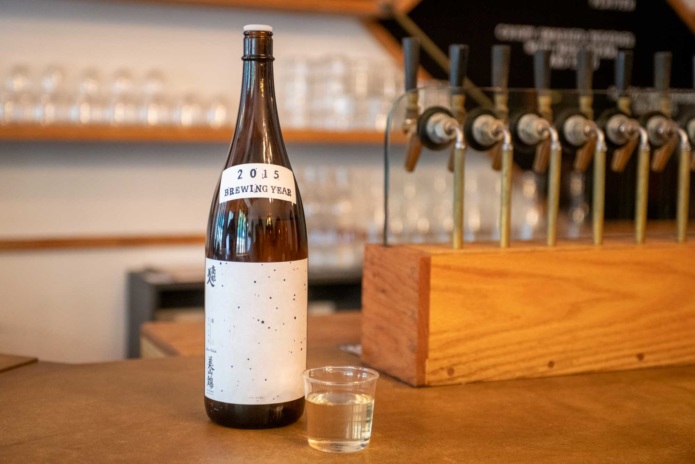
Ok, let’s go through some. What’s movie theater sake?
Movie theater sake is anything delightful in a one-cup. My favorite is the Kikusui Funaguchi. There’s four different varieties, all nama genshu, so they’re cask strength and they’re unpasteurized. So they’ve got a bigger, more voluminous flavor. The red can, if you drink it room temperature, tastes like a brandied cherry, in the best way. So you can have your Manhattan moment in the theater.
And what’s mother-in-law sake?
Right now what I have on my list is Senkin’s Muku Modern. It’s a beautiful junmai daiginjo. It’s from Tochigi prefecture, which is an inland prefecture right above where Tokyo is located. They call themselves a sake domaine, because the son took over after working for 15 years in Europe as a wine sommelier. And it tastes like frozen muscat grape. It’s got a little more acidity than you typically find in sake, and so it’s really got that French white wine moment that all mamas are going to like.
You’re going to have food at Accidental Bar. And sake pairings tend to be even more fraught than wine pairings. What’s your secret to how to get sake to go not just with traditional Japanese food but other things too?
My chef, Jordan Larsen, worked in a few restaurants and did some catering, but she ended up working for TED [Conferences] for the last good bit of her career. She reached out to me because she’s been a customer of mine, for about eight years. And she observes a predominantly vegan diet, and then she also eats fish. So pescatarian, but no dairy. And that’s a really nice niche for all the things sake can do.
This is part of the reason more people aren’t drinking sake: Just because you have Italian wine on your menu does not make you an Italian restaurant. But for whatever reason if you have sake on your menu, it has to be a Japanese restaurant. That’s everyone’s idea in their head.
So I like to joke that at best this place is a half-Japanese restaurant, because my husband is from Kyoto. But I really want people to think about what they can have out of their own fridge, and give them pairings that make them say, “Oh, I could have had sake with the sandwich I had last week for lunch, or the spaghetti i made at home.”
When I used to do my sake-pairing dinners for Niche Niche, I’d always have Southern barbecue as the main plate — pork in some rendition, and a little bit of potato salad or mac and cheese; and people would be blown away. At the end of the day, chicken-fried steak is basically katsu.
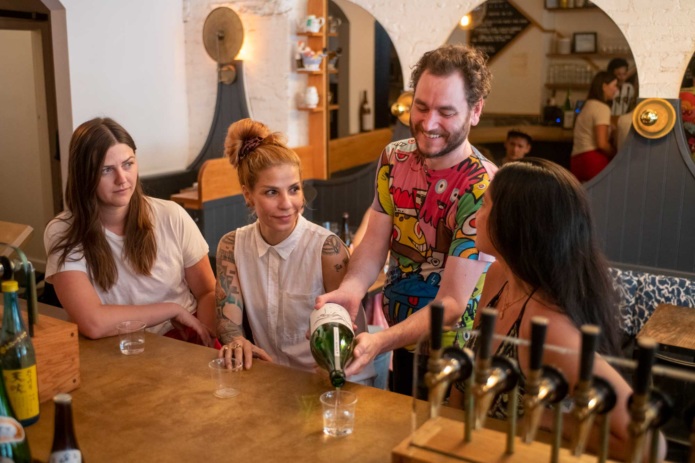
For sure. And perhaps this doesn’t work with Jordan’s choices, but cheese and sake get along great, too.
Our most classically Japanese sake tasting experience is, we have an otsumami platter to start — five different tastes that you want with sake. Something on the plate is going to be exceptional with it, and we’re not going to dictate to you the perfect pairing. On that plate right now we have pickled okra, we have an amazing blue cheese, we have a fresh fig and some beautiful local honey, and a fiddlehead fern dressed with a little white miso. And there’s a smoked oyster; it’s the best thing I’ve eaten with sake in the last year.
Outside of that, we do beautiful crispy potatoes, with dressed crabmeat and a miso cream that’s cashew based, so it’s dairy free. It is delightful and summery. We’re doing a mix of Japanese mushrooms with marinated daikon, but on a skewer, a little torched, so it feels like your barbecue moment. And it’s a progression in each bite of richness, texture, and umami. And then we’re doing a barbecued pulled jackfruit that gives a pulled-pork vibe, over a crispy polenta cake.
And eventually there’ll be some meat, too. Because I’m a big old carnivore.
The t-shirts. Explain the t-shirts.
For my 27th birthday I hand-drew a shirt with a bunch of multiple cartoon wieners on it, for my party. Because I figure, surround yourself with the things you love. And then it just became very culty popular and I started making them officially.
Now, one of the sakes on my list I served at my wedding, Yuzo Special, from Iwate. Yuzu-san is one of the two brothers that run Nanbu Bijin brewery, and three years ago he was in New York doing a tasting. And I said, “I love your shirt” — he was wearing a Nambu Bijin shirt. And he saw I was wearing my shirt. And my friend screamed from across the room, “Trade him!” So we went to the bathroom and switched shirts, and now every time we see each other we trade whatever shirts we’re wearing. It’s terrible for my wardrobe. I have to buy two of everything I like.
But through that, all these brewers who visit New York, it’s on their checklist now. You have to get drunk with Austin, and you have to get a d— shirt.
Jon Bonné is Resy’s managing editor. Follow him on Instagram and Twitter. Follow Resy, too.
- Six Things You Need To Know About Planta Queen, Now Open in Manhattan
- What to Order at New York’s Top Cocktail Bars, According to the Bartenders
- Focus Features & Resy Present: A Brasserie Les Halles Pop-up
- Now Open on Resy: Dame, Lil’ Frankie’s, Ichimura, PDT, and More
- Winona’s Opened Mid-Pandemic. Being Flexible Became Its Identity.
- The Resy Guide to Outdoor Dining in New York


